MT FESTERS is not, as you might have thought, an elevated stone protuberance in the world of the Munsters. It is simply an anagram of the acronyms ERMES and TFTS.
Arguably the same thing is now happening with V2X technologies. V2X (Vehicle to Everything, sometimes also known as ITS, intelligent transport systems) represents a number of different solutions for connection to, and between, road vehicles to enhance road safety and improve driverless driving. Many countries around the world (including the USA, Japan and Europe) set aside 75 MHz of spectrum from 5850 - 5925 MHz for this purpose (as per ITU Recommendation M.2121). However in 2020, the FCC reduced the amount of spectrum available from the original 75 MHz, to just 30 MHz citing the availablity of other technologies such as radar, lidar and video cameras as delivering many of the safety-related capabilities that V2X was intended to provide. Japan has recently done likewise.
In Europe, CEPT has recommended 5855 - 5925 MHz for V2X/ITS technologies (ECC/REC/(08)01), and harmoinsed the use of the frequency range 5875 - 5925 MHz whereas the European Commission has harmonised only the frequency range 5875 - 5905 MHz (Commission Decision 2008/671/EC). Even the specification for the technology (ETSI EN 302 571) hedges its bets on which piece of spectrum will or could be used for this technology.
Notwithstanding all this, and the fact that the spectrum has been available for 15 years, there has been little to no take-up of the technology. The C-Roads initiative shows (on the 'implemented services' page) the extent of coverage of V2X equipped roads. With the exception of one or two highways, most deployments are city based experiments. The fact that the technology is yet to become standard in new vehicles is leading to classic 'chicken and egg' situation where manufacturers are reluctant to put the technology in cars because there is nothing for them to connect to, and highways agencies are reluctant to install any roadside infrastructure as vehicles are not equipped with it. Furthermore, there is confusion about the business model for the roadside equipment. Is this a safety responsibility of the road authorities, or could it be a commercial provider offering advanced weather and traffic reports who builds it out?
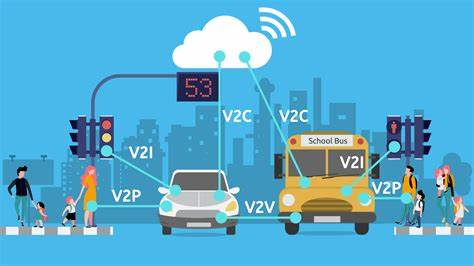
Alongside this confusion, 5G mobile technology is slowly being rolled-out and has the capability to provide the kind of connectivity between vehicles and the roadside that V2X/ITS promises (and the business model is clear). Equally, in-car radars now have the ability to communicate with neighbouring vehicles to provide information on when the driver is applying the breaks, for example. The case for V2X/ITS is therefore rather nebulous and it seems ever more likely that the spectrum set-aside for that purpose will fester for a few more years before pressure mounts and it is decided that V2X, like ERMES and TFTS has evaporated into nothingness.
What the spectrum could then be used for is a question for another day, however one option may be CBTC (communication based train control) which often uses unlicensed 2.4 and 5.8 GHz frequencies and could do with a 'safer' home given it is used to control the movement of (mostly metro) trains. China is considering the possible use of the frequency range 1785 - 1805 MHz for CBTC which, if you've been following this article, you will realise includes some of the original TFTS spectrum. And thus the circle is squared.
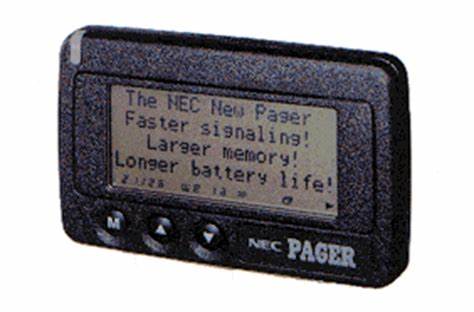 ERMES was a European Paging system. In the early 1990s, at a time when paging was taking off, the European Union issued a directive (90/544/EEC) which forced all EU Member States to set aside the frequency range 169.4 - 169.8 MHz for paging services. Ultimately text messaging using SMS came along at the same time and made paging obsolete before any EU-wide services were introduced. Fifteen years later, in 2005 the directive was repealed.
ERMES was a European Paging system. In the early 1990s, at a time when paging was taking off, the European Union issued a directive (90/544/EEC) which forced all EU Member States to set aside the frequency range 169.4 - 169.8 MHz for paging services. Ultimately text messaging using SMS came along at the same time and made paging obsolete before any EU-wide services were introduced. Fifteen years later, in 2005 the directive was repealed.- TFTS was the terrestrial flight telecommunications service. The European Radiocommunications Committee set aside 1670 - 1675 and and 1800 - 1805 MHz for TFTS in 1992 (ERC Decision (92)01). TFTS was meant to be a network of ground based transmitters which would provide voice and basic data connectivity to aircraft. This decision was withdrawn ten years later in 2002 when no networks whatsoever had been rolled-out and satellite communication for aircraft had become easier and far less expensive.
Arguably the same thing is now happening with V2X technologies. V2X (Vehicle to Everything, sometimes also known as ITS, intelligent transport systems) represents a number of different solutions for connection to, and between, road vehicles to enhance road safety and improve driverless driving. Many countries around the world (including the USA, Japan and Europe) set aside 75 MHz of spectrum from 5850 - 5925 MHz for this purpose (as per ITU Recommendation M.2121). However in 2020, the FCC reduced the amount of spectrum available from the original 75 MHz, to just 30 MHz citing the availablity of other technologies such as radar, lidar and video cameras as delivering many of the safety-related capabilities that V2X was intended to provide. Japan has recently done likewise.
In Europe, CEPT has recommended 5855 - 5925 MHz for V2X/ITS technologies (ECC/REC/(08)01), and harmoinsed the use of the frequency range 5875 - 5925 MHz whereas the European Commission has harmonised only the frequency range 5875 - 5905 MHz (Commission Decision 2008/671/EC). Even the specification for the technology (ETSI EN 302 571) hedges its bets on which piece of spectrum will or could be used for this technology.
Notwithstanding all this, and the fact that the spectrum has been available for 15 years, there has been little to no take-up of the technology. The C-Roads initiative shows (on the 'implemented services' page) the extent of coverage of V2X equipped roads. With the exception of one or two highways, most deployments are city based experiments. The fact that the technology is yet to become standard in new vehicles is leading to classic 'chicken and egg' situation where manufacturers are reluctant to put the technology in cars because there is nothing for them to connect to, and highways agencies are reluctant to install any roadside infrastructure as vehicles are not equipped with it. Furthermore, there is confusion about the business model for the roadside equipment. Is this a safety responsibility of the road authorities, or could it be a commercial provider offering advanced weather and traffic reports who builds it out?

Alongside this confusion, 5G mobile technology is slowly being rolled-out and has the capability to provide the kind of connectivity between vehicles and the roadside that V2X/ITS promises (and the business model is clear). Equally, in-car radars now have the ability to communicate with neighbouring vehicles to provide information on when the driver is applying the breaks, for example. The case for V2X/ITS is therefore rather nebulous and it seems ever more likely that the spectrum set-aside for that purpose will fester for a few more years before pressure mounts and it is decided that V2X, like ERMES and TFTS has evaporated into nothingness.
What the spectrum could then be used for is a question for another day, however one option may be CBTC (communication based train control) which often uses unlicensed 2.4 and 5.8 GHz frequencies and could do with a 'safer' home given it is used to control the movement of (mostly metro) trains. China is considering the possible use of the frequency range 1785 - 1805 MHz for CBTC which, if you've been following this article, you will realise includes some of the original TFTS spectrum. And thus the circle is squared.
1 comment
( 2009 views )
| permalink
| 



 ( 2.8 / 144 )
( 2.8 / 144 )




 ( 2.8 / 144 )
( 2.8 / 144 )
Friday 10 June, 2022, 08:51 - Broadcasting, Licensed, Radio Randomness, Spectrum Management
Posted by Administrator
Sporadic-E propagation is a topic which comes up relatively regularly here at Wireless Waffle. This increadible mode of propagation enables reception of radio signals, typically in the range 25 to 150 MHz, over very large distances - at least distances that are very large for those types of frequencies. Distances of up to 2000 km (1250 miles) are possible and, for example, distant FM radio stations can be received as strongly as local ones - sometimes so strong that they wipe-out the reception of the local stations. Posted by Administrator
Various articles exploring this unusual mode of propagation have graced these pages over the years, however as part of updating the FM DX Logbook a new analysis has been added. This takes the form of a bar-chart showing in which month Sporadic-E and Tropospheric propagation has caused reception of distant FM radio stations.
A number of publications state that Sporadic-E propagation tends to occur primarily in the summer months, and sometimes in the winter. Conversely, tropospheric propagation can occur at any time of the year. To test this hypothesis, the FM DX Logbook now produces a graph showing the month in which each of the logging took place.
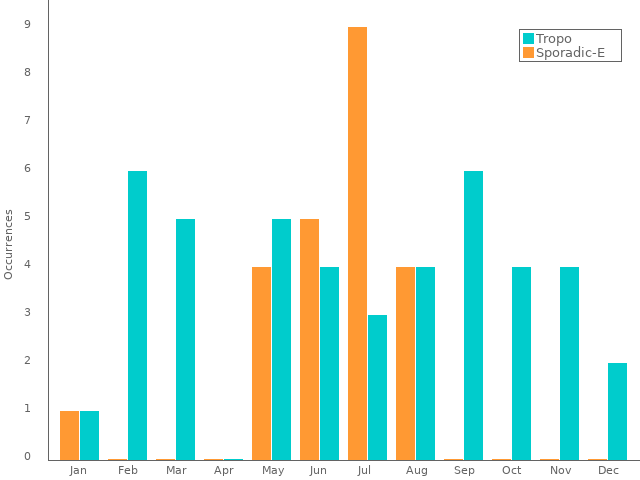
So far the results support the hypothesis with Sporadic-E propogation occuring in January and then between May and July, with tropospheric propagation having been recorded throughout the year. Every time a logging is added to the page, the chart will be updated, so it will be interesting to see whether this pattern continues.
Wednesday 18 August, 2021, 09:35 - Broadcasting, Licensed, Radio Randomness, Spectrum Management
Posted by Administrator
For some time, Wireless Waffle has published an FM DX Logbook. This logbook records any DX (distance) reception of FM broadcast stations that have been received, through whatever means (i.e. home FM tuner, car radio, software radio). Though an interesting exercise in itself, a recent update to the page to show the propagation mode which has been used also included some simple calculations to show the number of metres travelled divided by the number of Watts of transmitter power, and an additional calculation working out what the received signal power would be, assuming free space path loss between the transmitting and receiving location.Posted by Administrator
The use of free space path loss as the propagation model is definitely not applicable for any mode of propagation other than line-of-sight but it proved to be a useful exercise. Based on the frequency and power of the transmitter, and the length of the path, it is possible to determine how strong the received signal would be, if the path was line-of-sight. The results show an interesting trend.
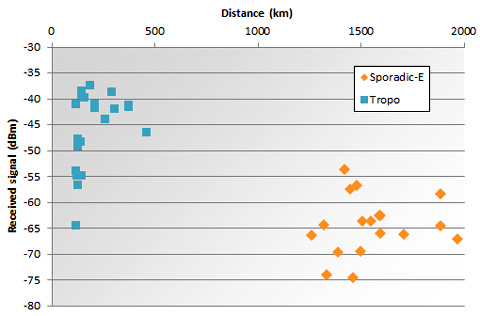
With the exception of a few shorter paths (up to about 150 km), the theoretical signal strengths received from broadcasts received via troposhperic propagation are clustered around -40 dBm (which equates to about 67 dBuV/m). Similarly, the theoretical signal strength of transmissions received via Sporadic-E propagation are clustered around -65 dBm (42 dBuV/m). Note that these are not measured signal strengths, but a calculation of how strong the signals would be if they were being received via a line-of-sight path - which they are not.
A previous Wireless Waffle article identified that around 40dBuV/m is required at a receiver for FM reception. It is almost certainly true, that in the case of both the DX reception via the troposphere, or via Sporadic-E, the actual received signal strength would be similar, as in both cases the signal would need to be strong enough to be successfully received: the necessary signal would be nearer the -65 dBm level than the -40 dBm level. If this is true, then it must also be true that the additional loss caused by a signal travelling via ducts in the troposphere compared to via ionised clouds in the E-layer is around 25 dB, as this is the additional loss which the signal could tolerate and still be received.
This just goes to show how effective Sporadic-E propagation is and why it is (or indeed was) such a problem for VHF television and radio broadcasters during the summer months when it is most prevalent. It also suggests that the path loss via Sporadic-E must be close to the free space value, as if the received signal strength is around 42 dBuV/m based on free space path loss, this is only a couple of dB different to that needed for successful reception and the actual path could not be introducing much in the way of additional attenuation.
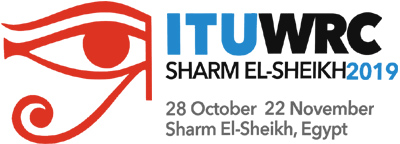 Though it may have passed most of the international news channels by, the world's radio spectrum regulators and associated government departments and ministers have just signed away the results of the 2019 World Radiocomminication Conference (WRC-19) held in Sharm El Sheikh, Egypt. This 4 week long event is where international decisions on the use of the radio spectrum take place. Or at least that's the theory. All 'decisions' have to be driven by consensus, which means that everyone must agree and with so many divergent views on topics as wide ranging as more spectrum for 5G mobile services, to globally harmonising spectrum for railway communications, there is lots to discuss. There were around 20 items on the agenda for the conference.
Though it may have passed most of the international news channels by, the world's radio spectrum regulators and associated government departments and ministers have just signed away the results of the 2019 World Radiocomminication Conference (WRC-19) held in Sharm El Sheikh, Egypt. This 4 week long event is where international decisions on the use of the radio spectrum take place. Or at least that's the theory. All 'decisions' have to be driven by consensus, which means that everyone must agree and with so many divergent views on topics as wide ranging as more spectrum for 5G mobile services, to globally harmonising spectrum for railway communications, there is lots to discuss. There were around 20 items on the agenda for the conference.Of particular interest to radio amateurs was agenda item 1.1, which concerned:
the allocation of the frequency band 50-54 MHz to the amateur service in Region 1
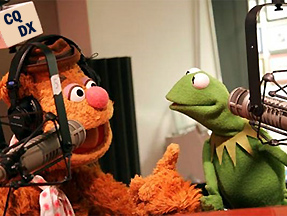 Radio amateurs have requested that the whole frequency range from 50 to 54 MHz is allocated to them on a primary basis in ITU Region 1 which is Europe, the Middle East and Africa. At present, in the ITU Radio Regulations, which dictate which frequencies are allocated to which services, 50 - 54 MHz is allocated to radio amateurs on a primary basis in Regions 2 (the Americas) and 3 (Asia/Pacific), and the idea was to align the band in every region. In Region 1 the frequencies are allocated to broadcasting as well as (in some countries) to radiolocation, land mobile and fixed (point-to-point) services, but not to radio amateurs (unless national administrations have unilaterally decided to allow them). Only in Botswana, Eswatini, Lesotho, Malawi, Namibia, the Democratic Republic of Congo, Rwanda, South Africa, Zambia and Zimbabwe does the band have any allocation to radio amateurs in the existing Radio Regulations.
Radio amateurs have requested that the whole frequency range from 50 to 54 MHz is allocated to them on a primary basis in ITU Region 1 which is Europe, the Middle East and Africa. At present, in the ITU Radio Regulations, which dictate which frequencies are allocated to which services, 50 - 54 MHz is allocated to radio amateurs on a primary basis in Regions 2 (the Americas) and 3 (Asia/Pacific), and the idea was to align the band in every region. In Region 1 the frequencies are allocated to broadcasting as well as (in some countries) to radiolocation, land mobile and fixed (point-to-point) services, but not to radio amateurs (unless national administrations have unilaterally decided to allow them). Only in Botswana, Eswatini, Lesotho, Malawi, Namibia, the Democratic Republic of Congo, Rwanda, South Africa, Zambia and Zimbabwe does the band have any allocation to radio amateurs in the existing Radio Regulations.Following the machinations at WRC-19, the radio amateurs have been granted a secondary allocation across Region 1 in the frequency range 50 - 52 MHz, with primary allocations in some or all of the range 50 - 54 MHz in a limited number of new countries. A secondary allocation means that the amateurs must not cause interference to any primary services (i.e. broadcasting and land mobile) and must accept interference from them, but it's a step forwards towards a global expansion of the 6 metre band.
This does not mean that the band will be available in each and every country immediately. First, each country's administration or regulator needs to update their national frequency allocation table to include the new band. This can take anything from a few months to a few years. There are still some countries who have not yet implemented the results of the previous WRC in 2015, despite it being completed 4 years ago. So don't hold your breath hoping to use the band when on holiday in Ouagadougou, it may be a long time before this new band is widely available.
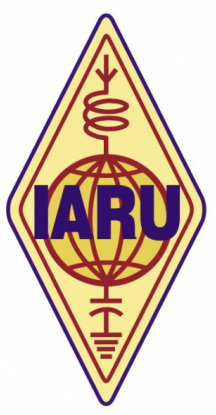 The next task for the International Amateur Radio Union (IARU) who work tirelessly on behalf of radio amateurs at events such as WRC-19 is to deal with Agenda Items 1.2 and 9.1.2 of the next WRC in 2023. Agenda Item 1.2 is entitled:
The next task for the International Amateur Radio Union (IARU) who work tirelessly on behalf of radio amateurs at events such as WRC-19 is to deal with Agenda Items 1.2 and 9.1.2 of the next WRC in 2023. Agenda Item 1.2 is entitled:to consider identification of the frequency bands ... 10.0-10.5 GHz for International Mobile Telecommunications (IMT), including possible additional allocations to the mobile service on a primary basis... (N.B. this applies in Region 2, i.e. the Americas, only)
This includes a secondary Amateur allocation between 10.0 and 10.5 GHz, and a secondary Amateur-Satellite allocation between 10.45 and 10.5 GHz (as used by the already infamous Es'Hail-2 (a.k.a. QO-100), the first geostationary satellite with an Amateur radio transponder. Whilst the allocation of the band for IMT (5G) services does not preclude the Amateur service, in reality, a band full of a dense network of base stations and handsets would make it nigh-on impossible to be used for amateur radio and the band may be lost, in exactly the same way that the 2.3 GHz and 3.4 GHz bands were.
Agenda Item 9.1.2 is entitled:
Review of the amateur service and the amateur-satellite service allocations in the frequency band 1 240-1 300 MHz to determine if additional measures are required to ensure protection of the radionavigation-satellite (space-to-Earth) service operating in the same band...
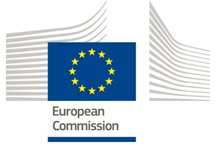 The IARU will need to stave off pressure to remove (or otherwise reduce) the radio amateur secondary allocation on the frequencies 1240 - 1300 MHz (the 23 cm band) as it is claimed by the European Commission that amateurs may cause interference to their Galileo satellte navigation system. Not, it is worth pointing out, the everyday service used by smart phones and in-car sat-navs, but an additional service for specialist users.
The IARU will need to stave off pressure to remove (or otherwise reduce) the radio amateur secondary allocation on the frequencies 1240 - 1300 MHz (the 23 cm band) as it is claimed by the European Commission that amateurs may cause interference to their Galileo satellte navigation system. Not, it is worth pointing out, the everyday service used by smart phones and in-car sat-navs, but an additional service for specialist users. 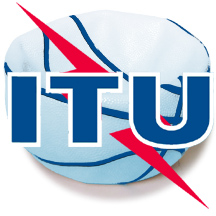 The argument goes that there was once an amateur television repeater in the band which caused interference. Once - and it was resolved very quickly. But that is enough to raise concerns of potential wider future interference problems. The Commission therefore want to throw the amateurs out of the spectrum. The amateur allocation is secondary, so they must not cause interference, and so the Galileo service is already protected, but that is not always enough for everyone. The ITU giveth with one hand, and threaten to take away with two others. Was it ever any different?
The argument goes that there was once an amateur television repeater in the band which caused interference. Once - and it was resolved very quickly. But that is enough to raise concerns of potential wider future interference problems. The Commission therefore want to throw the amateurs out of the spectrum. The amateur allocation is secondary, so they must not cause interference, and so the Galileo service is already protected, but that is not always enough for everyone. The ITU giveth with one hand, and threaten to take away with two others. Was it ever any different?
